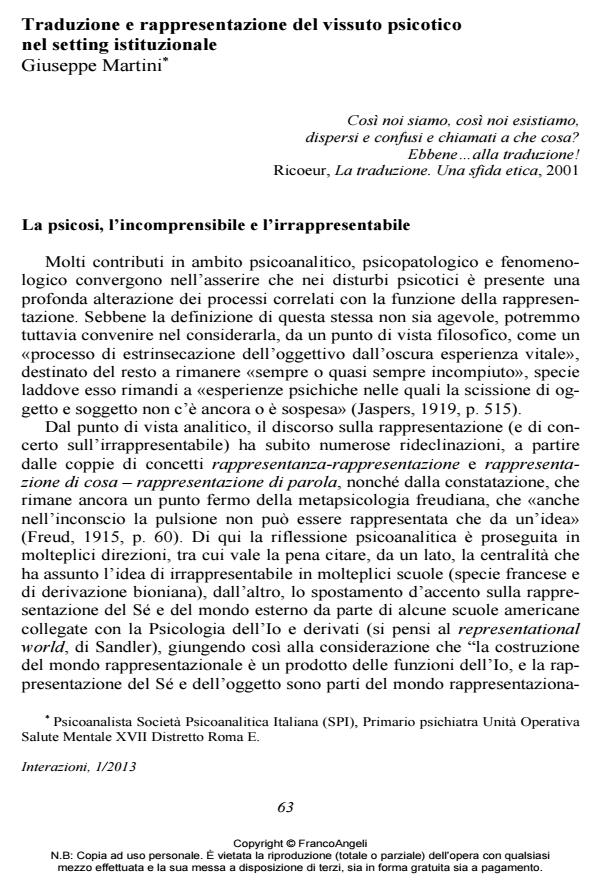Translation and representation of psychotic beingin the institutional setting
Journal title INTERAZIONI
Author/s Giuseppe Martini
Publishing Year 2013 Issue 2013/1
Language Italian Pages 18 P. 63-80 File size 401 KB
DOI 10.3280/INT2013-001005
DOI is like a bar code for intellectual property: to have more infomation
click here
Below, you can see the article first page
If you want to buy this article in PDF format, you can do it, following the instructions to buy download credits

FrancoAngeli is member of Publishers International Linking Association, Inc (PILA), a not-for-profit association which run the CrossRef service enabling links to and from online scholarly content.
Psychotic patients suffer a dramatic lack of their representational capacities. These chaotic experiences require a complex operation of translation in order to be put into words the not presentable unconscious. This translation leads the patients and their therapists from the form less feeling to multiple and sometimes contradictory narrative models. The work discusses the translational path ways that leadfrom a “private” representation of psychosis to a shared representation, with reference to whath appens in the institutional setting (Mental Health Department), that is characterized by thecomplexity of actors and dynamics,with a circulation of representations between patients, family member sand therapists, and a continuous return from the whole to the partsand vice versa.The tools of institutional work are thus reinterpreted in the light of psychoanalytic theory and philosophy of translation.The concepts ofthe provisional translation, the impossibility to translate the psychosis, the phantasmic patientand the imaginary patient are introduced. The Author also tries to illustrate, from an analytical point of view, the interference and interactions between different models of representation of patients, family and therapists, as well as the "Babel of languages" that comes out.
Keywords: Not presentable, untranslatable, interlanguage, provisional translation, imaginary patient. The Variable Setting and the Link: two characters in search of an author, by Giuseppe Saraò, Lucia Zani,
Giuseppe Martini, Traduzione e rappresentazione del vissuto psicotico nel setting istituzionale in "INTERAZIONI" 1/2013, pp 63-80, DOI: 10.3280/INT2013-001005